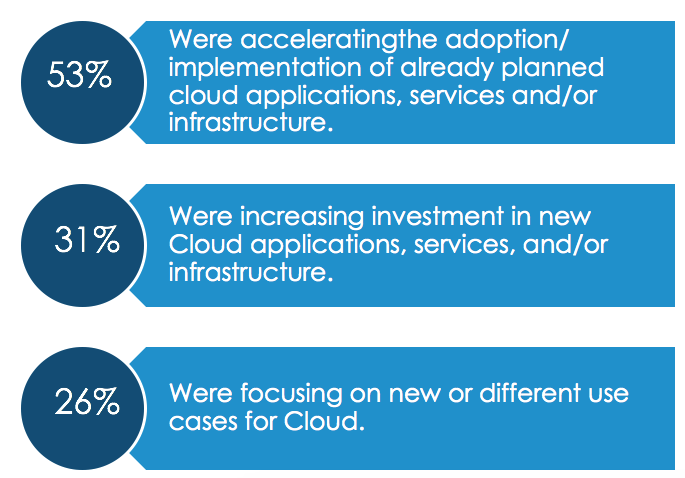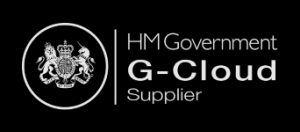Where it all began
Although the notion of network-based computing dates to the 1960s, it’s never been clear who coined the term ‘cloud computing’. The timeline that can be tracked runs something like this:

Cloud was declared the new agile, flexible and cost-effective method of managing technology because it offered:
- Increased security in times of greater cyber threat.
- Operational resilience, availability and performance of business systems and data.
- Greater agility and scalability to allow businesses to adapt to changing circumstances.
- Solid foundational support to the new digital era.
- Lower costs and improved shareholder returns.
It hailed a new digital era of advancement in technology, innovation and data where literally anything was possible, in all industries and across all walks of life. Cloud encapsulated something important; the consumerisation and commoditisation of IT.
What a difference a decade makes
Bringing sunshine to cloud users, where there used to be rain
There has been a paradigm shift in the way we live and work; Cloud has made the world a smaller place, allowing people to stay in touch, share content and work together virtually. It also offers consumers and businesses the greater convenience and quality, at a lower cost with reduced risk they now expect.
The demand for Cloud shows no sign of abating; actually, quite the opposite as the level of investment and ROI by the likes of Amazon, Microsoft and Google suggests. Newer organisations are asset light and joined the Cloud party from the get-go; it’s the more traditional businesses that must catch up if they’re to remain relevant and competitive in their markets. After all, Cloud is a key component in driving the limitless potential for technology; AI, Big Data, IoT and machine learning as well as software providers investing in/moving to cloud-hosted solutions such as SaaS.
Post-pandemic
Once upon a time, in a business landscape far, far away, organisations thought having deep enough pockets to plug in the latest (often bespoke) technology was enough to keep them ahead of the game. They believed their use of IT platforms and digital channels was modern and competitive and were only shocked out of their inertia when COVID-19 effectively pulled the pin from the hand grenade. The mayhem that ensued shifted where employees, customers, suppliers and organisational ecosystems needed to physically exist. The business fairy tale ‘happy ever after’ seemed a very remote possibility.
But never have the words ‘remote’ and ‘possibility’ been in such positive partnership.
Forced to adapt, many organisations are now taking stock of gaps in their capability; they recognise Cloud is the only solution that will support ‘anywhere operations’. The Harvard Business Review Analytic Services Survey (September 2020) found:

This type of scalable IT model requires change in not only the technology infrastructure, but management practices, security and governance policies, and employee and customer engagement models too. Gartner lists the five foundational building blocks needed to deliver anywhere operations successfully as:
- Collaboration and productivity: Workstream collaboration, meeting solutions, Cloud office suites, digital whiteboarding and smart workspaces.
- Secure remote access: Password-less and multifactor authentication, zero trust network access (ZTNA), secure access service edge (SASE) and identity as the new security perimeter.
- Cloud and edge infrastructure: Distributed Cloud, the IoT, API gateways, AI at the edge and edge processing.
- Quantification of the digital experience: Digital experience monitoring, workplace analytics, remote support and contactless interactions.
- Automation to support remote operations: TAI Ops, endpoint management, SaaS management platforms, self-service and zero-touch provisioning.
Choosing the right option
Making the right platform choice for your individual organisation’s circumstances has got a lot more complicated; it’s no longer an either/or choice. Improving security and performance through an expanded portfolio of environments making you future-fit should be the goal.
Public Cloud is not owned by the multiple end users. Traditionally run off-premise, public Cloud providers are now also running Cloud services on their clients’ on-premise data centres.
Private Cloud is solely dedicated to one end user. Traditionally run on-premise, organisations are now building private clouds on rented, vendor-owned data centres located off-premises.
Hybrid Cloud is when several public and private Cloud types are deployed, integrating LAN, WAN, VPN and API environments. Every hybrid Cloud setup is unique to the individual organisation and should consolidate IT resources, be scalable, use a unified management tool and orchestrate processes using automation.
Multi Cloud is when more than one Cloud service is deployed, but of the same type (public or private) sourced from different vendors. Adding modern automation capabilities to multi Cloud environments eases the complexity around self-service, governance and compliance, resource management, financial controls, and capacity planning.
Edge computing is more about location than technology; if speed matters, then so does distance. It ensures ‘always on’ availability and applications can be used effectively in remote locations. With data transfer happening over shorter connection lines, reliability is organically improved. Transfers happen faster and with reduced interruptions meaning throughput increases and latency decreases. Edge should be considered an extension of Cloud rather than a replacement and there are several options available:
- Internet of Things (IoT) edge Cloud: Distributed services that interact directly with edge devices.
- Urban community Cloud: Cloud services distributed into nodes in a city or urban area connecting to multiple customers.
- 5G mobile edge Cloud: Cloud services as part of a 5G telco/carrier network.
- Global network edge Cloud: Cloud services designed to integrate with global network infrastructure such as cell towers, hubs and routers.
According to Gartner, less than 10% of enterprise-generated data is created and processed at the edge right now, but they predict this will grow to 75% by 2025. IDC predicts that by 2023, more than half of new enterprise IT infrastructure deployed will be at the edge rather than corporate data centres, and the number of apps at the edge will increase 800% by 2024.
Are the worries still the same?
The answer is yes and no.
Yes, there will always be some inevitable anxiety and pressure felt around the potential impact, disruption, cost and/or failure of a transformation programme. This is a universal symptom of any major project ownership/responsibility let alone one that will most likely be the biggest change investment an organisation is ever likely to make. This is why our Cloud Plug and Playbook focuses on giving Programme Directors/users as much clarity and control as possible.
Although the decade-old questions about the viability of Cloud computing have been answered, other concerns are cropping up as the uptake skyrockets:
Q: Are Cloud facility security levels high enough?
A: Pick your supplier well as some will not take responsibility and make it your problem.
Q: What happens if something out of our control goes wrong (e.g. a fire breaks out at an AWS or GCP server site)?
A: It’s essential to have a robust Disaster Recovery and BCM plan in place but as a positive, the new tech enables you to minimise data loss in the first place and recover quickly.
Q: Will my incumbent team have the right skills/capacity, or will I be able to hire the right people?
A: There is a big digital skills gap right now so resourcing the people needed to meet the changing tech landscape is a challenge. Make re-training and upskilling your team a priority (this will motivate them on a personal level and reduce costs).
Q: The Board is demanding a cost-effective, yet flexible Cloud spend but I don’t believe this is possible.
A: It is if you take up-front control of your supplier relationships and the associated commercial implications. Take the time to assess your approach and alter/build the right systems that support cloud-specific models and achieve the best ROI.
Q: Cloud relies on the latest technical infrastructure, but who pays for the upgrades when they’re due? The Cloud hosting provider or the client?
A: Carry out a comprehensive contract review at the start of your programme, speak to a few vendors to see what they offer and choose the one that satisfies your commercial brief.
The future
“We talk about two types of transformation: digitisation (the use of digital technology to improve operational excellence within an organisation) and ‘becoming digital’ (the use of digital technology to rapidly innovate and create new offerings). Cloud plays a role in both,” says Martin Mocker, professor of information systems at the Germany-based Reutlingen University Business School. “By now, cloud is so essential, it’s hard to think of transformation without it.”
The Harvard Business Review Analytic Services report on ‘The State of Cloud-driven transformation’ (December 2020) top findings back this up:
- 83% of survey respondents say Cloud is very or extremely important to their organisation’s future strategy and growth.
- 69% say that 60% or more of their organisation’s infrastructure and applications will be in the Cloud in two years.
- 66% say that leveraging real-time data analytics (enabled by AI or machine learning) is very or extremely important to monitoring and gaining insights across Cloud services, applications and infrastructure.
And it’s worth noting it’s not only established organisations that are benefitting. There’s been a huge entrepreneurial spike as tech innovators are able to share their ideas with the world using Cloud. Rich pickings indeed!







Recent Comments